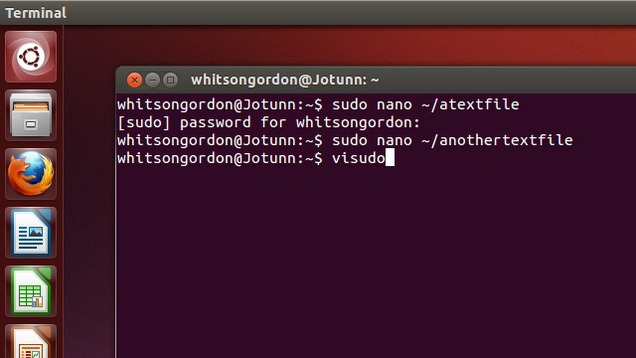

Get:3 bullseye/main armhf rpi-eeprom armhf 13.13-1 Get:2 bullseye/main armhf raspi-config all 20220425
#SUDO LINUX UPGRADE#
If you choose to continue with the upgrade, you'll see a long output like this: $ sudo apt-get upgrade If you choose to exit out, you'll see an output like this: $ sudo apt-get upgrade You can enter y, Y, or yes to continue with the upgrade, or n, N, or no to exit out of the upgrade command. The amount of data that needs to be fetched, and the amount of storage space the upgraded packages will use once installed: Need to get 2,616 kB of archives.Īnd finally, you'll see a prompt asking if you want to continue with the upgrade: Do you want to continue? Towards the bottom of the output, you'll see the packages that will be upgraded: The following packages will be upgraded: Then, you'll see an output similar to this: $ sudo apt-get upgradeģ upgraded, 0 newly installed, 0 to remove and 0 not upgraded.Īfter this operation, 1,596 kB of additional disk space will be used.
#SUDO LINUX HOW TO#
How to Use the sudo apt-get upgrade CommandĪfter running the sudo apt-get update command, in the same terminal window, type in sudo apt-get upgrade, enter your password if necessary, and hit enter. This command will always show you the number of packages that can be upgraded, or a note saying everything is up to date.įor more information about the differences between apt and apt-get, check out this section below. Or you can use the more modern sudo apt update command instead. You can always run apt list -upgradable again to see if anything can be upgraded.

You may have run sudo apt-get update multiple times.
#SUDO LINUX SOFTWARE#
Notice that there is no mention of packages that can be upgraded, and no note about running apt list -upgradable.īut this does not necessarily mean there's no outdated software on your system, just that you already got the latest version of the package list. Rpi-eeprom/stable 13.13-1 armhf īut if there are no newer versions of packages or dependencies in your distro's software repository, you'll see an output like this: $ sudo apt-get update If you want to see which packages can be upgraded, run apt list -upgradable: $ apt list -upgradable Get:6 buster/main armhf Packages ģ packages can be upgraded.

If there are updates, you'll see an output similar to this: $ sudo apt-get update In the terminal, enter sudo apt-get update in the command line, enter in your admin password, and press the Enter key. For example, in Ubuntu and Linux Mint, the default terminal is Gnome Terminal, but may be listed under Terminal in the application menu. In your Debian-based Linux distro (Debian, Ubuntu, Linux Mint, Kali Linux, Raspberry Pi OS, and so on), open a terminal window.ĭepending on your distro, the terminal might go by different names depending on how you open it. How to Use the sudo apt-get update Command But just running sudo apt-get upgrade will not automatically upgrade the outdated packages – you'll still have a chance to review the changes and confirm that you want to perform the upgrades. The sudo apt-get upgrade command downloads and installs the updates for each outdated package and dependency on your system.
#SUDO LINUX INSTALL#
In other words, it'll figure out what the latest version of each package and dependency is, but will not actually download or install any of those updates. The main difference is that sudo apt-get update fetches the latest version of the package list from your distro's software repository, and any third-party repositories you may have configured. What Are the Differences Between sudo apt-get update and sudo apt-get upgrade? In this article, I'll go into what both of these commands do, how to use them, and some frequently asked questions. They're common commands for Linux admins and people doing DevOps, but are handy to know even if you don't use the command line often. Sudo apt-get update and sudo apt-get upgrade are two commands you can use to keep all of your packages up to date in Debian or a Debian-based Linux distribution.


 0 kommentar(er)
0 kommentar(er)
